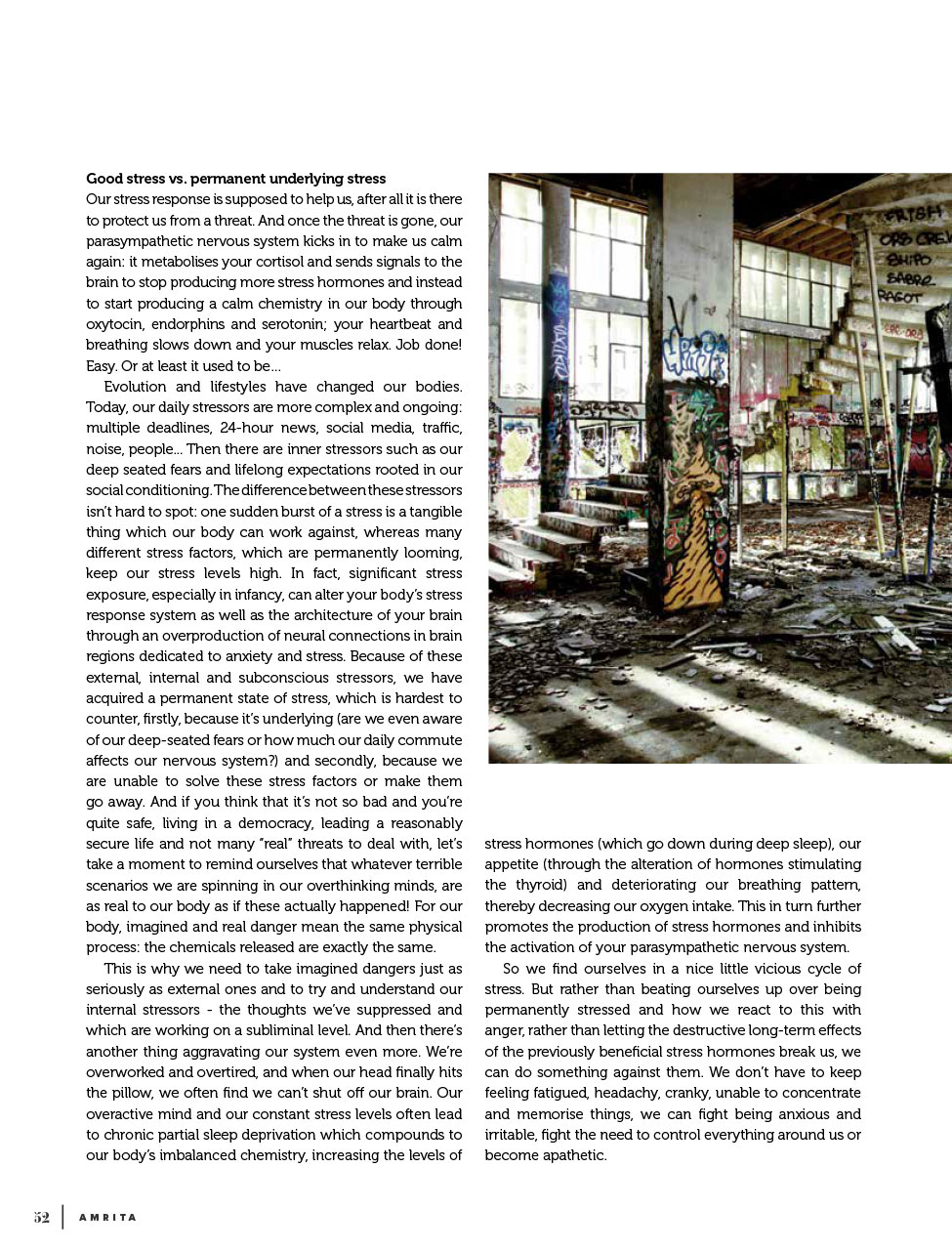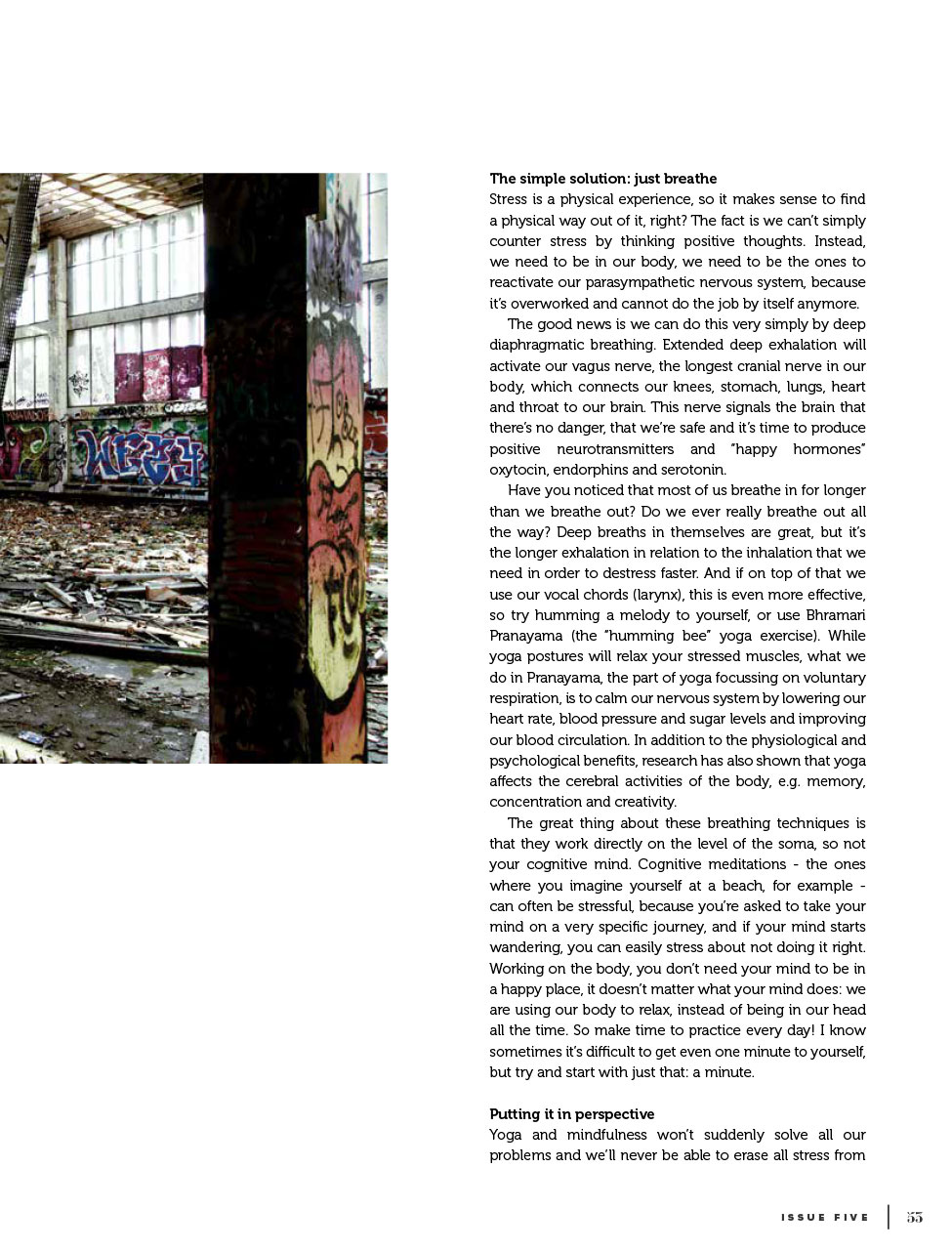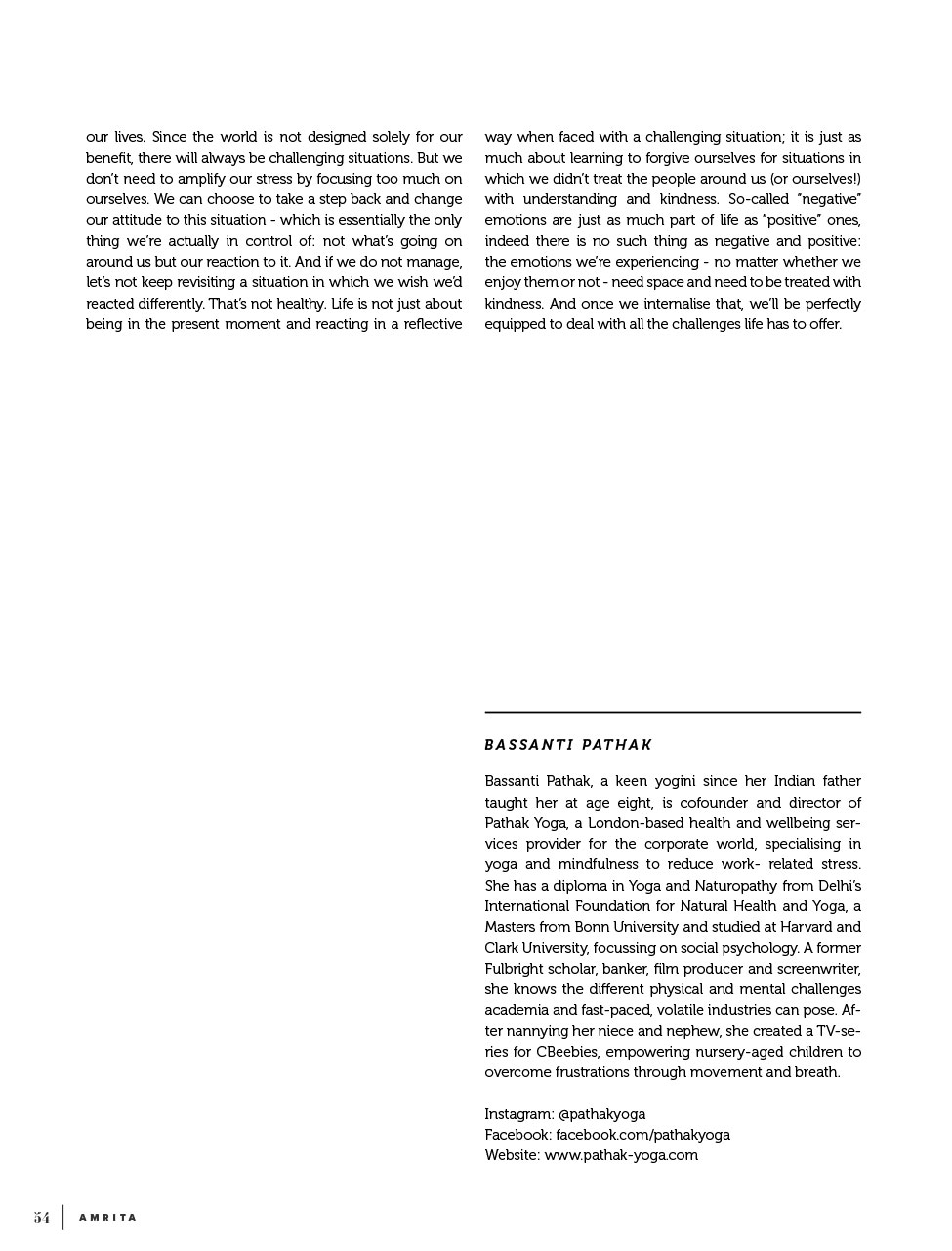Understanding and Countering Stress
We live in a world of stress, a society that might even celebrate stress as synonymous with our sense of importance and self-worth. But the sustained stress we find ourselves in is not good for our body. Stress affects every aspect of your day, your night, your life – and being stressed is not something to strive for. The article explores why our “fight or flight” stress response can be a good thing (how tense muscles as well as heightened immunity and concentration kept us from being eaten in the days of the hunter-gatherers) but can quickly turn when we keep being on “emergency alert” (muscles stay tense and the stress hormones that had such a positive effect on the body in their first 30 minutes develop serious side effects).
Our stress response kicks in when there’s not even an actual threat – our body reacts the same even when we’ve only thought of a stress-inducing situation. And our brain does too: stress lets those parts of the brain take over that respond with fear or anxiety, which means our rational decision-making goes out the window.
If we keep being exposed not just to external stressors (work deadlines, traffic, noise…), but also to internal and subconscious stressors such as deep-seated fears or expectations stemming from social conditioning, then our muscles don’t destress, our stress hormones don’t get metabolised, the calm chemistry in our body can’t be restored, and our brain’s architecture begins to change, as neural connections in brain regions dedicated to anxiety and stress strengthen and become our default.
But rather than beating ourselves up over being permanently stressed, anxious and irritable, we can do one easy thing: breathe – deep belly breaths with a focus on prolonged exhalations, which spark your vagus nerve (your longest cranial nerve, connecting all vital organs to the brain) into activity, so that your “rest and digest” system can make you calm again. An even quicker way to get those happy hormones into your body: engage your vocal chords, as you would in the Pranayama breathing exercise “bhramari” or the humming bee.
These little tools calm our nervous system by lowering our heart rate, blood pressure and sugar levels and improving our blood circulation. We’re using our lung capacity to the fullest, and through this much more efficient exchange of oxygen and carbon dioxide, you activate your parasympathetic nervous system and subtle chemical changes take place in your body, which can change your neural pathways lastingly. It also enhances your memory, concentration and creativity. How’s that for such a simple thing?
Read full article at Yoga Alliance Professional’s Amrita publication (pages 50-54): https://www.





